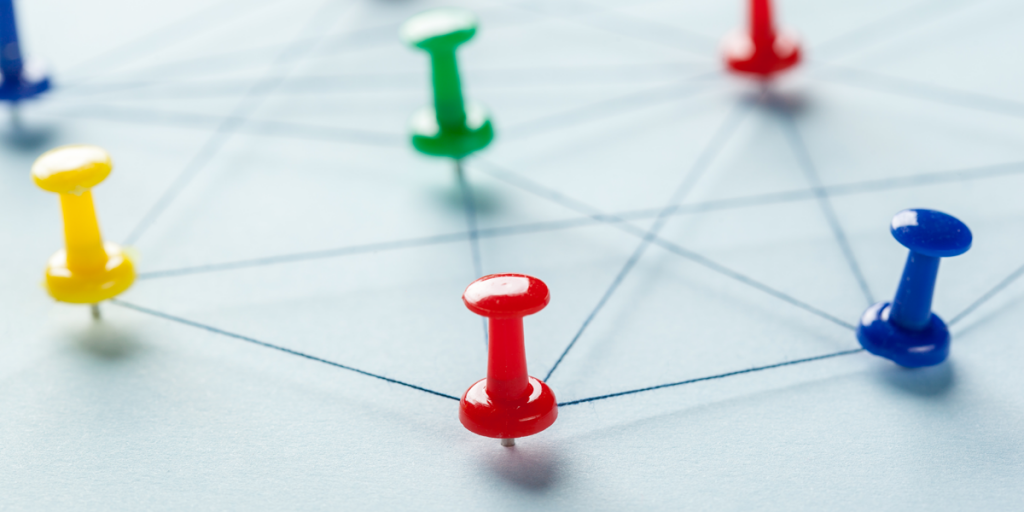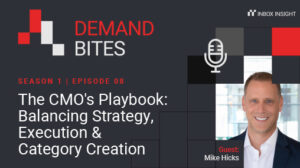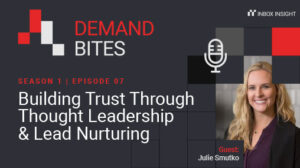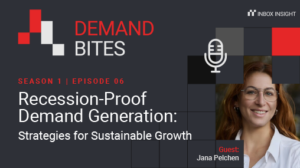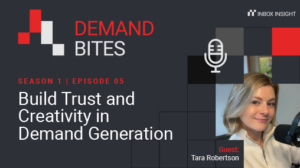When marketing budgets tighten, conversion rates are usually the first KPI to come under scrutiny. And it can be difficult to identify what your conversion journeys look like in order to justify your strategy.
As conversion funnels get more complex and multifaceted to reflect B2B buyer life cycles, the ability to accurately analyze and contextualize your conversion rates can become more complicated.
This can result in misdiagnosing the performance of a campaign, leading to missed opportunities to improve, and in some cases, stopping activity unnecessarily.
This article looks at how to plot, execute and measure your conversion journeys to deliver high-performing lead generation campaigns with an upwards lift in conversion rates.
Reading time: 4 minutes
What is a conversion journey?
A conversion journey is a customer journey map that provides insight into the process of converting prospects and visitors into customers. It outlines the steps a prospect takes on the path to purchase, from considering the product or service to becoming a customer. The conversion journey typically begins when a customer first becomes aware of the product or service and subsequently moves through the stages of consideration, evaluation, purchase and loyalty. By understanding the conversion journey, marketers can better understand a prospect’s needs and motivations as they progress through each stage.
The conversion journey is an invaluable tool for businesses as it allows them to optimize their sales and marketing efforts. By understanding a potential customer’s needs and motivations at each stage, marketers can tailor their messaging to increase the likelihood of conversions and identify areas of improvement and opportunities for growth.
The 3 conversion funnel stages
It’s important to understand the different conversion stages of the journey in order to ensure that the customer moves through the entire funnel.
Top of the funnel
Top of the funnel (TOFU) is the initial stage of the conversion funnel where the prospect becomes aware of your product and service. At this stage, a prospect starts to search for information about the product and service and the main aim is to create awareness about the product or service. At this stage, it’s important to provide the prospect with useful and quality content that can help them in understanding your product or service.
Middle of the funnel
Middle of the funnel (MOFU) stage is the stage where prospective customers start to actively engage with your product or service. Here, the prospect is more informed about the product or service and is looking for more information to make a purchase decision. This is the stage where the prospect starts to compare products and services and the main aim is to give the prospect the information needed to make a purchase decision. This is done through different strategies such as email marketing, remarketing and retargeting.
Bottom of the funnel
Bottom of the funnel (BOFU) stage is the final stage of the conversion funnel and where the prospect makes a purchase decision. At this point, your prospect is looking for a solution to their problem and your goal is to provide them with the solution. This is done through different strategies such as customer support, product demos and special offers.
In theory, the methodology for getting a potential customer to convert boils down to getting your target audience to move through the conversion journey as quickly and logically as possible. But this isn’t as easy as it sounds.
This is because buyers no longer move down a clean linear passage to purchase. The sheer volume of information and digital channels means they zig zag through digital touchpoints. And, with just the click of a button, journeys can be aborted altogether. This isn’t ideal if you’ve invested in paid media to kick off your ‘top of the funnel’ activity.
What does this mean for your lead generation campaigns?
This means achieving your lead targets and delivering high-quality prospects to your sales team is more challenging. But it’s not impossible.
It calls for a change in tactics to ensure your process reflects the needs and behaviors of your target buyers.
In order to do this, mapping and tracking your conversion journey is essential. The best performers are not only able to identify and fix any loose components causing drop-off, they also create multiple opportunities for leads to jump back in.
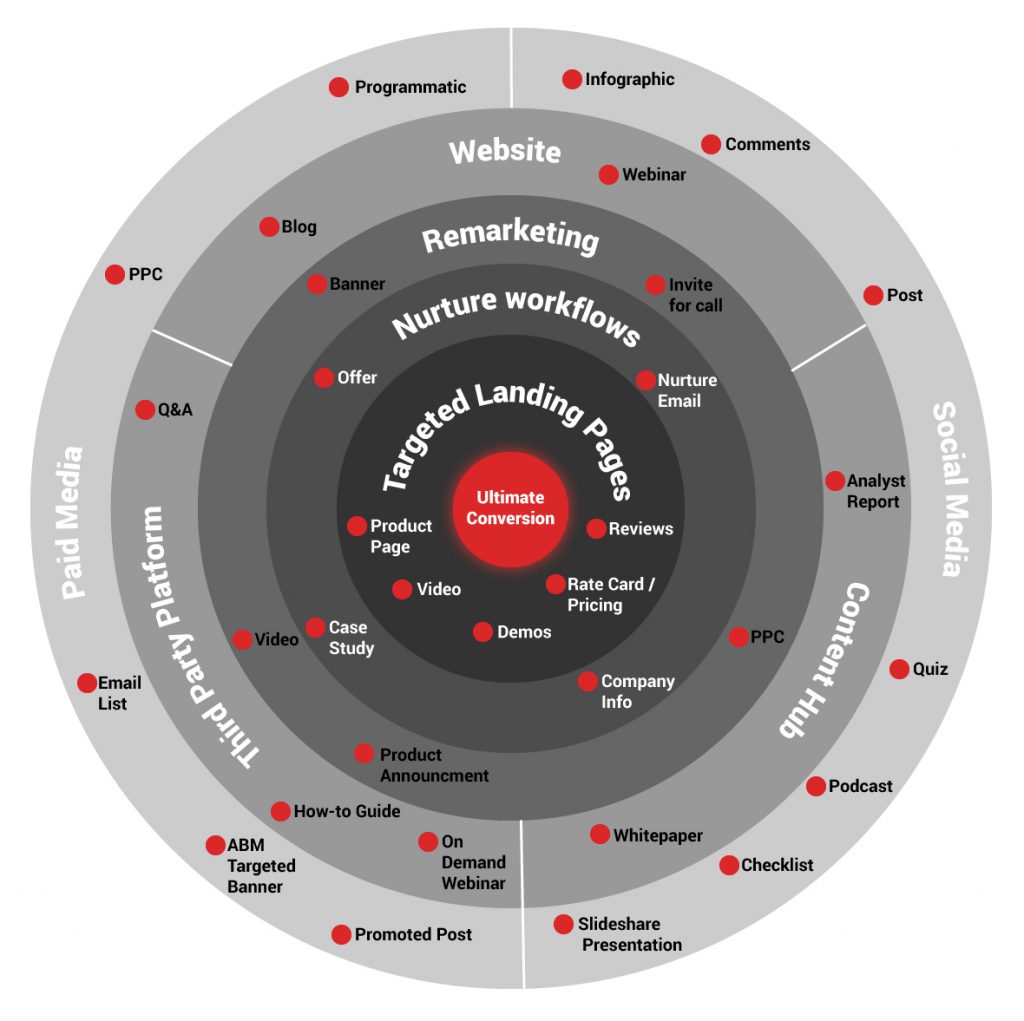
From the above diagram, you can see how the ultimate conversion remains at the center of your activity. However, it’s surrounded by many smaller, yet just as important conversion points, that lead to it.
B2B buyers can ping back and forth between engagement points, but what’s important to note is that at every touchpoint they will have accumulated knowledge of your brand. If you’ve got your tactics right, every interaction will have generated value. And this is key to relationship building.
See on our diagram how external channels such as social media and paid channels increase the surface area for distributing your message and attracting early interest? As we work inwards the surface area becomes more concentrated, helping to reign in the focus of your target audience and drive them ever closer to your ultimate goal.
By surrounding your audiences with immersive content experiences, supported by multichannel content distribution tactics, you stand a better chance of keeping your audiences orbiting your digital ecosystem towards your ultimate conversion goal.
How do I get started mapping my conversion points? Here’s a 5-point checklist:
We recommend taking a systematic approach to ensure all variables are considered, justified and monitored for improvement.
Step 1: Define your target audience. The best marketers consolidate all their audience intelligence into actionable buyer personas. This is invaluable for helping justify the following steps.
Step 2: Establish your goal. What action do you want them to take? How does it work within the context of the conversion journey? How will completing this action contribute to your ultimate goal?
Step 3: Know what makes your audience tick. What is the incentive for following your CTA? How will you make their buying decision less complex or stressful?
Step 4: Create a mutually beneficial exchange. How does following your CTA generate real value for your reader? If you’re using a form to gather information, what are you offering in return?
Step 5: Anticipate the next conversion point. What do you want your reader to do next? How will this bring them closer to your ultimate conversion goal?
Though you can’t control 100% how an audience interprets and reacts to your message, you can create optimized conditions that improve the probability they will take action.
If you’ve done the above and aren’t seeing the performance you’re expecting, here are 3 further factors to consider:
-
- Relevancy – Is your message relevant to your target audience?
- Logical – Does your message and CTA make sense to your audience?
- Ease – Is what your asking them to do easy or does it involve effort on their behalf?
Having your audience’s needs at the forefront of your mind should help you create genuinely valuable journeys that build trust, credibility and the motivation to buy. All these things are essential in helping you achieve your goals and obtaining the best ROI from your efforts.
